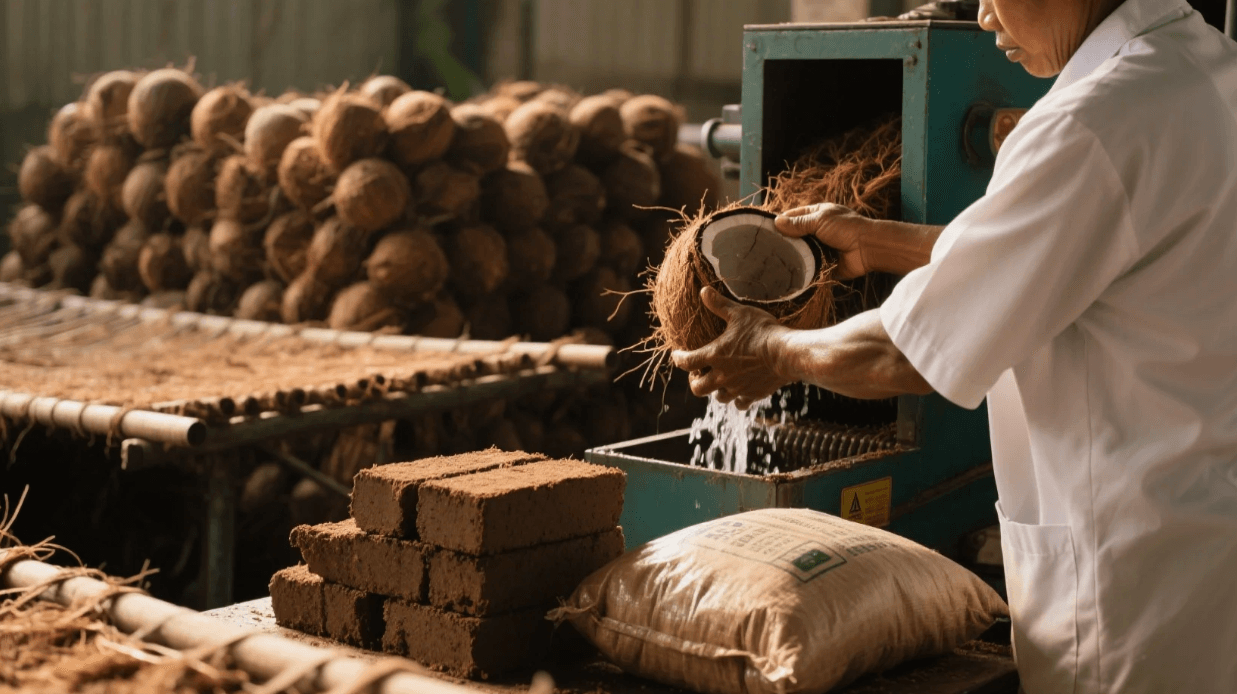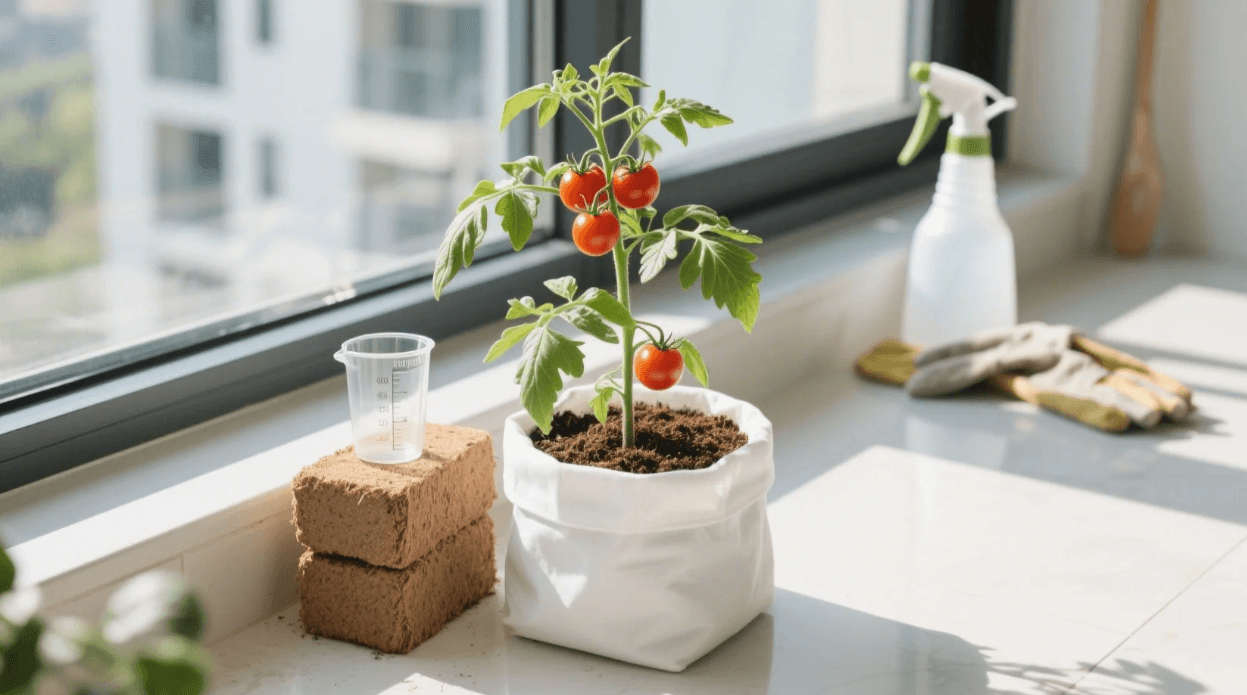The Dark Side of Peat Moss: Why We Switched to Coconut Coir
For decades, peat moss has been the gold standard for potting mixes—lightweight, moisture-retentive, and acidic, making it ideal for seed starting and container gardening. But beneath its horticultural benefits lies an environmental crisis: peat bogs, which take thousands of years to form, are being destroyed at an alarming rate.
In response, the UK has banned peat moss for home gardeners by 2024, and sustainable alternatives like coconut coir are gaining traction. But is coir really better? And how does it compare in performance?
This article explores:
✅ The ecological impact of peat harvesting
✅ How coconut coir stacks up as a replacement
✅ Practical tips for transitioning to peat-free gardening
Why Peat Moss Is an Environmental Disaster
1. Carbon Emissions
Peat bogs store 30% of the world’s soil carbon—more than all forests combined (Journal of Environmental Science, 2023). When drained and harvested:
- CO₂ is released at a rate of 2.3 gigatons annually (equivalent to global aviation emissions)
- Biodiversity collapses – Rare species like bog orchids and carnivorous plants disappear
2. Slow Regeneration
Peat grows just 1mm per year—meaning a single bag of peat moss destroys 500+ years of growth.
3. The UK Peat Ban (And Why It Matters)
- 2024 ban on retail peat sales (already in effect for professional horticulture)
- EU considering similar restrictions by 2030
- US and Canada lagging – Still extract 1.3 million tons annually
Case Study: Ireland’s peatlands, once covering 17% of the country, have been reduced by 85% due to mining.
Coconut Coir: A Sustainable Alternative?
How It’s Made
- A byproduct of coconut farming (husks previously discarded as waste)
- Processed into fibers (for mats) and pith (for soil amendment)
Pros & Cons vs. Peat Moss
| Factor | Peat Moss | Coconut Coir |
| Renewability | Non-renewable (500+ yrs to form) | Renewable (harvested yearly) |
| pH Level | Acidic (3.5-4.5) | Neutral (5.8-6.8) |
| Water Retention | Holds 20x its weight | Holds 8-9x its weight |
| Aeration | Good | Excellent (less compaction) |
| Cost | 10−15 per cubic foot | 12−18 per cubic foot |
Personal Recommendation: I prefer coir for seed starting—its loose structure prevents damping-off disease.
Other Peat Alternatives (And Their Best Uses)
1. Compost (Best for Soil Structure)
✅ Improves microbial life
❌ Variable quality (may contain weed seeds)
2. Pine Bark Fines (Best for Orchids & Epiphytes)
✅ Long-lasting, good drainage
❌ Not ideal for fine seeds
3. Rice Hulls (Best for Aeration)
✅ Cheap and biodegradable
❌ Decomposes within a season
Case Study: California nursery Sweet Earth switched to 50% coir + 50% compost—reducing peat use without sacrificing plant health.
How to Transition to Peat-Free Gardening
1. Start with Seed Starting Mixes
- Look for "peat-free" labels (e.g., Espoma, Burpee Organic)
- DIY mix: 1 part coir + 1 part vermiculite + 1 part compost
2. Adjust Watering Habits
- Coir dries out faster than peat—check moisture daily
- Add water-retaining polymers if needed
3. Rebalance Soil pH
- Peat is acidic; coir is neutral
- For acid-loving plants (blueberries, azaleas), add pine needles or sulfur
4. Support Companies Going Peat-Free
- Proven Winners (committed to 90% peat-free by 2025)
- Miracle-Gro Performance Organics (already peat-free)
Regional Tip: In dry climates (Arizona, Spain), coir outperforms peat by resisting hydrophobic crusting.
The Future of Sustainable Gardening
While coir isn’t perfect (its carbon footprint from shipping is a concern), it’s a major step forward from peat. Other innovations include:
- Biochar (carbon-rich charcoal that improves soil)
- Mushroom compost (waste from mushroom farming)
- Locally sourced leaf mold (minimal processing)
Personal Recommendation: If you must use peat, choose sustainably harvested brands like Sun Gro Black Gold.
Final Verdict: Should You Ditch Peat Moss?
Yes, If:
✔ You’re a home gardener (not a commercial grower)
✔ You care about climate change and habitat loss
✔ You’re willing to adjust watering habits
Not Yet, If:
✖ You grow acid-loving plants without pH adjusters
✖ You rely on peat-based mixes for delicate seedlings
Sources:
- Journal of Environmental Science: "Peatland Carbon Emissions" (2023)
- RHS: Peat-Free Gardening Guide
- USDA: Sustainable Soil Amendments Report
Ready to make the switch? Start with one coir-based product and see how your plants respond. Every peat-free bag counts! 🌱♻️
Bond
|
2025.04.23






